Siberian Husky is bright blue eyes and typical coat instantly remind one of snowy landscapes and sled dog races: the Siberian Husky is easil...
Siberian Husky is bright blue eyes and typical coat instantly remind one of snowy landscapes and sled dog races: the Siberian Husky is easily recognizable by its appearance. We see more and more of these Nordic dogs, which have gained in popularity in recent years.
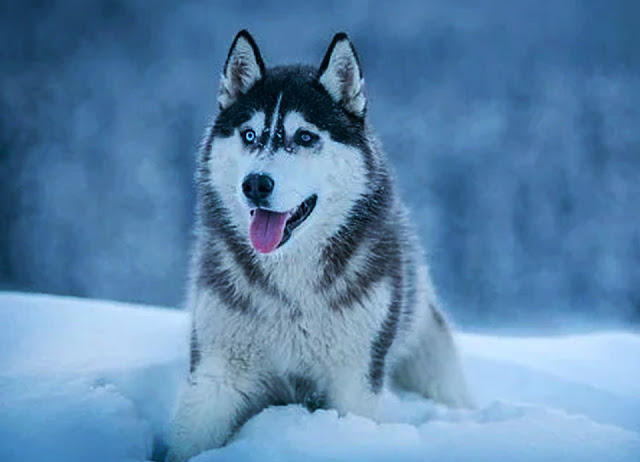
Siberian Husky Article Contents
- Appearance of the Siberian Husky
- The Siberian Husky: champion on ice and snow
- A mythical sled dog
- The education of the Husky
- Adopt a Siberian Husky
- Siberian Husky Health and Care
- Checklist before adopting your Husky
- Find the Husky of your dreams
Appearance of the Siberian Husky
A Siberian Husky can be easily recognized by his appearance as a Nordic sled dog. Its dense coat consisting of two layers provides optimum protection against the cold. The fine, mostly white undercoat is renewed once or twice a year. When the Husky is on the move, the friction of the fine hairs causes a feeling of warmth, which is preserved by the top hairs. The mid-long top layer of hair can have different colors, ranging from white, black and red. Most Siberian Huskies have a band of color on the back, while their belly and chest are white. Often they also have a "mask" of colored hair on their head.
Their hairy ears are medium sized, closely spaced and set high on their head. In addition to the typical blue color of their eyes, there are also Husky dogs with amber eyes or even minnows.
The rounded tail of the Siberian Husky is said to be "sickle-shaped". Their tail has almost no undercoat and has a very specific function. For example, when there is a risk of snowstorms, these dogs roll up into a ball and hide their muzzle under their tail, this technique allows them to breathe filtered and slightly less fresh air.
The legs of Huskies are just as adapted to the Siberian cold, since they are smaller than those of other large dogs: the loss of heat is therefore less.
Many of you have already confused the Siberian Husky with the Alaskan Malamute. The coat of the latter is very similar to that of the Husky. It is also part of the sled dog category, but is less known by the general public. However, the Alaskan Malamute is more imposing, with a weight of 43 kg against 15 to 28 kg maximum for the Husky.
The Siberian Husky: champion on ice and snow
The ancestors of Husky dogs were indispensable companions of the Siberian nomadic tribes. In 1909, these hardy dogs became very successful when Siberian fur trader William Goosak participated in the annual All Alaska Sweepstakes sled dog race. In the beginning, people made fun of these dogs because of their small size compared to the sturdy size of the Alaskan Malamute.
This apriority quickly gave way to some admiration when William Goosak took third place in the classification of a 408 km race. He thus definitely made his mark.
The Husky's were just as successful the following year, taking the first places in the classification of different similar races. Later on, the first official breeding of the HUsky breed was born. The Norwegian sled dog handler Leonhard Seppala created it in Alaska with the dogs of William Goosak.
A mythical sled dog
Rarely is a dog so closely related to its preferred discipline. This is not surprising for the Siberian Husky, as he is a master of sledding! He can pull a load weighing up to nine times his own weight. He has a good sense of direction, which is necessary in snowy environments, and still accompanies the Inuit.
Nowadays, Huskies are most often found as pets, much appreciated by families. Today, the Husky is an ideal dog for leisure activities, which will be delighted to take on the role of sports companion and will prove itself in sled races, with no great surprise!
Moreover, their trainers are called "mushers". The musher always keeps the ropes taut to prevent the dogs from injuring themselves. He also gives a helping hand during the climbs and manages to guide the team by voice, only by giving orders to the dogs. The lead dog thus assumes a great responsibility: he must listen to his musher and obey orders without hesitation. The team can be composed of 4 to 20 dogs, depending on the length of the route and the type of trail. There are sled dog associations all over Europe, which organize competitions, in which the Siberian Huskies of course participate. In Canada and Alaska, extreme sled dog races are organized, with difficult climatic conditions, during which dogs and mushers travel together sometimes more than 1000 km.
The education of the Husky
A Siberian Husky as a guard dog? That's really not a good idea! These tenacious animals are generally very nice to humans. This character trait of the Husky is explained by the breeding methods of the breed. Most dogs of the breed are independent and have a great hunting instinct. Rabbits in sight? They're going for it! Unfortunately, their master's calls are very quickly ignored. This is why it is essential to give importance to the education of the Husky, which is not always easy. These Nordic dogs almost never bark but howl like wolves in order to attract the attention of those around them. As you can guess from their origins, these dogs need a lot of physical effort. A Husky that is not physically stimulated will find other occupations, which you may not like.
Adopting a Siberian Husky
With his remarkable physique and liveliness, it is not surprising that the Siberian Husky wins the sympathy of dog lovers. However, all these people wishing to adopt a Husky must think carefully before taking the step and be sure to be able to meet the needs of their future companion.
Not surprisingly, Nordic dogs are made to live in the cold: they really thrive when they are at medium altitudes, when most animals should have already put on protective boots. If you want to adopt a dog that prefers to be warm in winter temperatures and is happy to live in the sun, we advise you to turn to another breed of dog.
The Siberian Husky is not a breed of dog that is made to live permanently in warm countries. These sled dogs are long-lasting runners. Even as a companion dog, they need to get enough exercise on a daily basis through intense physical activity. An adult Husky can perfectly accompany you on a bike, he enjoys long walks or jogging, especially in cool temperatures. If you are still enthusiastic about going out despite the winter winds, then you will share this passion with your Siberian Husky. You will have to get your Husky used to cats, if possible from an early age. Because of their hunting instinct, adult Huskies mostly see them as prey. A flat or a house with a garden would be ideal so that these great sportsmen can exercise as much as they wish. Beware of damage! Many Huskies like to make holes in the lawn in the garden. So don't be surprised!
Siberian Husky Health and Care
Husky's care is not restrictive: the Husky's coat can easily be brushed. Brushing becomes particularly essential during the molting period, given the impressive amount of hair your dog loses. You don't need to wash your dog, most of the dirt on his coat can be wiped off with a dry cloth. But if you really can't skip the bathing stage, then only use water and a mild dog shampoo.
Siberian Huskies are robust dogs with almost no genetic predisposition to disease. However, it is essential not to overwork a dog in such a physical condition, especially during its growth period. Huskies can start training their muscles slowly once they reach adulthood.
Before adopting a Husky, make sure that the parents of your future pet are not affected by hip dysplasia. Siberian Huskies tend to be affected by zinc-responsive dermatosis, which causes skin problems. In this case, it is essential to consult your veterinarian who will be able to prescribe a zinc supplement for your dog. The average life expectancy of Huskies is 10 to 14 years.
Checklist before adopting your Husky
Are you convinced that you and your Husky will make an unbeatable team? Perfect! But before you adopt your Husky, there are a few things that need to be clarified.
A playmate
Many Huskies prefer to spend their time in a garden rather than indoors. In that case, you should adopt a second dog: the Siberian Husky likes to be well surrounded. Sled dogs are used to large packs: most of the time they do not like to be alone. Your Husky will be able to spend time with his companion when you are away.
Holiday planning
Can you imagine going on holiday with your pet? If so, find out about pet-friendly hotels and remember that a holiday in the sun is not suitable for Nordic dogs. If not, look for Husky-friendly boarding houses or ask a dog sitter to look after your dog.
Children and your Husky
If you have children, you will need to have clear rules in place before the new family member arrives.
The financial aspect
Also think about long-term financial commitments, because in addition to basic equipment such as leads, baskets, combs and brushes, claw scissors, blankets, cages and transport boxes for the car, you should not forget the regular expenses for quality food and visits to the vet. These costs can quickly increase in the event of illness.
Find the Husky of your dreams
If you wish to adopt a Husky, then you will first have to look for a good breeder. If you've found one, then you've also found an excellent contact, because a professional breeder will answer your questions about the Husky's health, breed specific needs, nutrition, activities and education of these sports aces.
You can also have the first contact with your future puppy at the kennel and get to know his parents. Then it will be the breeder's turn to ask you questions to determine whether you can offer a decent home to the little Husky puppy. Before buying, make sure the breeder belongs to a dog club or association and do not buy a purebred dog without papers. Because these sellers offering low prices are more interested in your money than in the well-being of the dogs. They very often break the prices: in most cases, the dogs are not vaccinated. Small puppies are not properly socialized and their parents are not raised in accordance with their needs.
If you are passionate about this breed, you will find professional breeders through national associations and organizations. Do you want to adopt an adult Husky? Or do you have a soft spot for cross-bred Huskies? In that case, you have other possibilities than breeding. In many countries, there are associations for Huskies in distress or sled dog organizations, which are dedicated to Nordic dogs who have lost their homes. These people will be able to inform you about the character of their dogs and tell you if they are really suitable for you. You may find a Husky in a shelter waiting for a new home. Whether the dog comes from a breeder or from a shelter, the vaccination booklet is in any case obligatory.
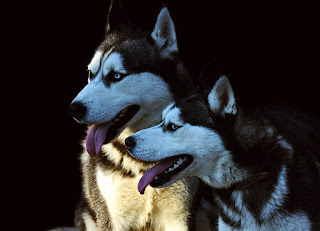
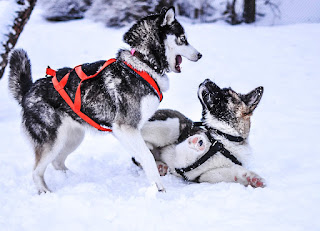
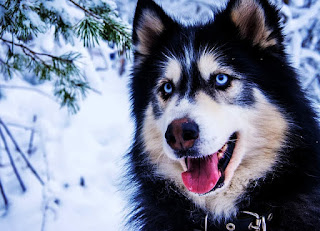
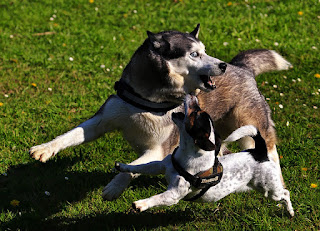

No comments